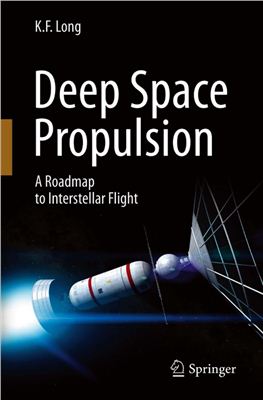Springer, 2012. - 368 p. - ISBN: 978-1-4614-0606-8,
978-1-4614-0607-5
As humans take their first tentative steps off our home planet, and debate the costs/benefits of sending people back to the Moon and perhaps on to Mars, we must also start to make plans for the day when we will venture forth as pioneers farther out into the Solar System and beyond - perhaps far, far beyond - to explore and settle new worlds around other stars. It is vital that we develop the deep space propulsion technologies that will take us there, first to explore with robotic probes, then to follow ourselves. This is necessary so that if anything catastrophic happened to Earth, our species would survive. And the possibilities for catastrophe are great. An impacting asteroid ended the reign of the dinosaurs, and today we have many other threats such as global war, climate change, pollution, resource limitations and overpopulation.
As humans take their first tentative steps off our home planet, and debate the costs/benefits of sending people back to the Moon and perhaps on to Mars, we must also start to make plans for the day when we will venture forth as pioneers farther out into the Solar System and beyond - perhaps far, far beyond - to explore and settle new worlds around other stars. It is vital that we develop the deep space propulsion technologies that will take us there, first to explore with robotic probes, then to follow ourselves. This is necessary so that if anything catastrophic happened to Earth, our species would survive. And the possibilities for catastrophe are great. An impacting asteroid ended the reign of the dinosaurs, and today we have many other threats such as global war, climate change, pollution, resource limitations and overpopulation.

